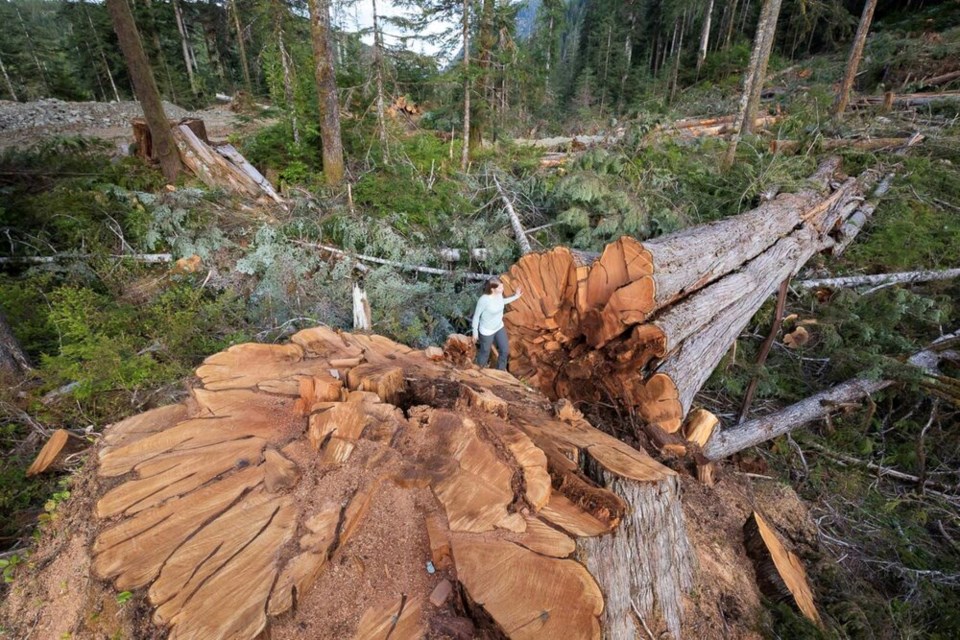More than 90 scientists are calling on the Canadian government to protect the country’s temperate and boreal forests — what they describe as a “critical lifeline” to guard against a climate and biodiversity “crisis.”
In to Prime Minister Justin Trudeau Wednesday, the signatories “strongly recommended” the Government of sa╣·╝╩┤½├Į make protecting forests a key pillar in its fight against climate change.
“While we commend sa╣·╝╩┤½├Į for its commitment to natural climate solutions as a climate priority, we are concerned by the rate of continued industrial logging in primary forests from the boreal to coastal rainforests,” notes the letter.
The federal government has made repeated promises to bolster the country's forests. During the 2019 election campaign, Trudeau pledged to plant two billion trees by 2030. Two years later, however, data obtained through a freedom of information request showed the federal government had planted 8.5 million trees, less than half a per cent of its target.
The letter — whose signatories include scientific heavyweights like Suzanne Simard, best known for uncovering forests’ underground fungal communication network — cites research showing sa╣·╝╩┤½├Į is home to roughly 16 per cent of the world’s remaining primary forests.
Primary forests are some of the “densest, wildest and forest ecologically significant forests on Earth,” according to Global Forest Watch, an online platform that provides data and tools for monitoring forests around the world.
To count as a , they must be largely undisturbed from industrial extraction, like logging, mining, dams and roads; evolve over a long period of time so that they are dominated by a nearly continuous tree canopy cover; and have unpolluted soil and water.
Because of their size and maturity, these forests hold up to 50 per cent more carbon per hectare than logged forests. But when logged they can turn into a “carbon bomb,” releasing more CO2 than they absorb.
Last year, that between 2001 and 2019, global forests — which altogether store roughly the same amount of carbon as currently exists in the atmosphere — emitted 8.1 billion metric tonnes of carbon dioxide. Over that same period, all the planet's trees absorbed another 16 billion tonnes of carbon.
Globally, forests remain a carbon sink — for now.
In sa╣·╝╩┤½├Į, logging operations clearcut an estimated five NHL hockey rinks every minute, according to a 2021 . That ranks the country as having the third-highest rate of intact forest loss in the world. Only Brazil and Russia are losing their forests faster.
In many cases, the carbon storage lost from a clearcut primary forest can take centuries to repay, “a luxury we simply no longer have,” notes the letter to the Canadian prime minister.
Even if clearcut forests are re-planted, research shows it can take up to a decade to start absorbing more carbon than it emits.
Meanwhile, the destruction of Canadian primary forests means only 15 of 51 boreal have enough habitat to survive. In sa╣·╝╩┤½├Į, about a quarter of forests are considered old-growth, while three per cent are “highly productive with large trees.”
The researchers say the best way to protect primary forests is under the leadership of Indigenous peoples.
The group also raises questions over “significant disparities” between national emissions inventories and what’s actually entering the atmosphere in sa╣·╝╩┤½├Į, especially in the forestry sector.
One study notes the annual emissions from domestic wood products releases roughly 140 megatons of carbon every year, or one-fifth of sa╣·╝╩┤½├Į’s total annual emissions.
To get a better handle on the environmental costs of industrial logging, they say government needs to do a better job at counting the emissions coming from sa╣·╝╩┤½├Į’s forests.
The letter comes a week ahead of the release of sa╣·╝╩┤½├Į’s , which will detail how sa╣·╝╩┤½├Į plans to reduce its emissions by up to 45 per cent below 2005 levels by 2030.
With files from the Canadian Press
